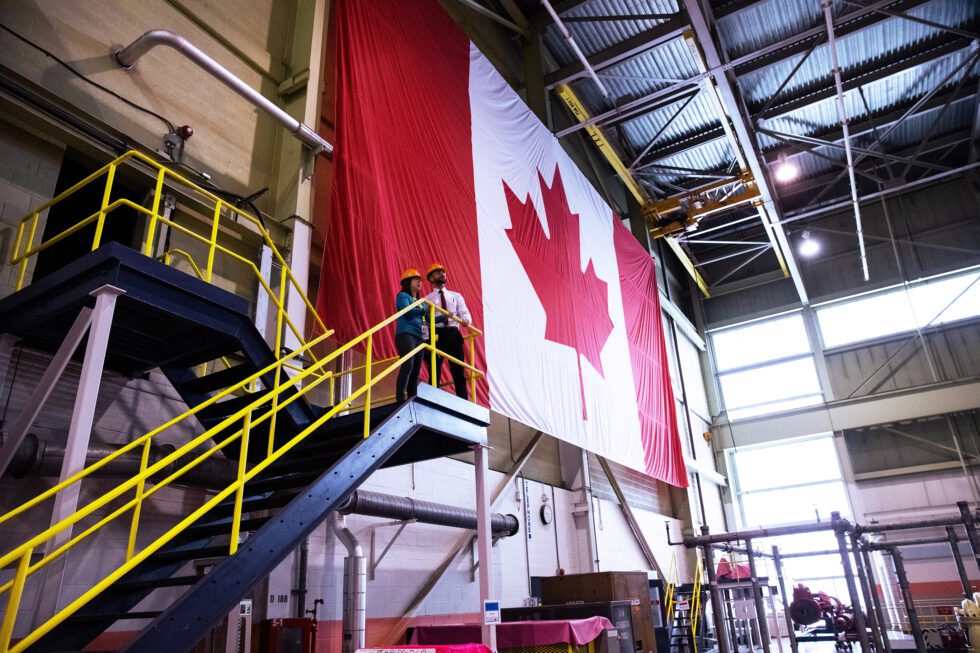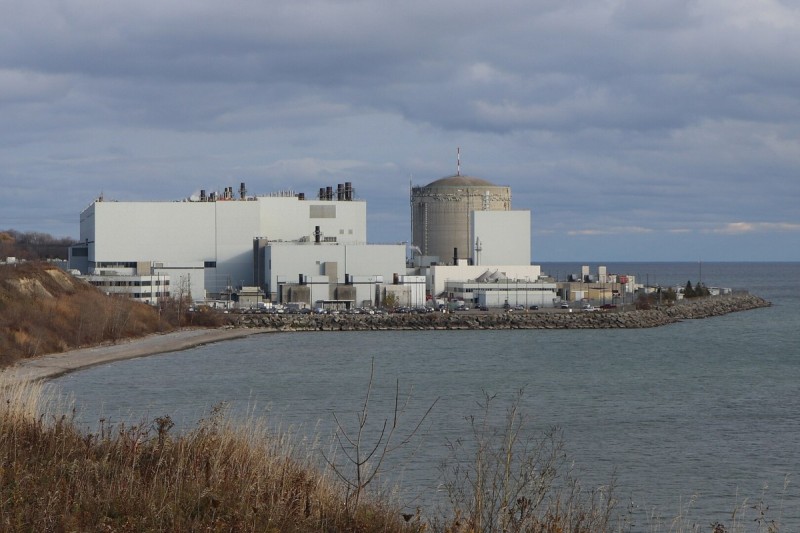Canada’s enhanced climate plan (released in Dec 2019) includes a gradually rising carbon price – to $170 per tonne by 2030. That’s a high price by international standards, which gives Canada a credible shot at hitting its 2030 climate target. The new plan made commentator Andrew Coyne take the market fundamentalist position that a higher carbon price should be the single policy, and governments should do little else.
While some might assume a higher carbon price reduces the need for other policy approaches, this blog argues that the plan to increase the carbon price creates an urgent need for a robust “green industrial policy”. Here I am referring to a policy approach where governments play an active role in guiding the economy toward net-zero GHG emissions (or beyond). Rather than simply sending signals to the market, industrial policy recognizes that governments co-create new development pathways with the private sector through strategies customized to unique regional and sectoral contexts. Relevant examples of green industrial policy include the Energiesprong project to transform building retrofits, the US Sunshot Initiative and ARPA-E, and the role public investment banks play in deploying sustainable energy.
The term industrial policy is back in vogue. A lack of an explicit industrial policy doesn’t mean state direction goes away – it often means government economic decisions are captured by incumbents with the greatest political power, which fails to support useful innovations that can transform economies. Industrial policy thinking appears under other titles such as “innovation policy”, the “entrepreneurial state”, and “sustainability transitions”.
A green industrial policy is so urgent because without it, the carbon price is unlikely to receive enough political support to ever reach its 2030 level or to induce the transformative changes required for a net-zero emissions economy. Here are five reasons why.
1. Political support depends on economic security and access to new services
While commentators like Andrew Coyne hope to see right wing parties propose a market fundamentalist position with a higher carbon price, we are more likely to see conservative movements exploit people’s economic insecurities by directing their anger against carbon pricing (as we’ve seen in Ontario, Alberta, France, and the US).
The federal government will use quarterly “rebates”, which promise to put more money in the pockets of the majority of Canadians paying the carbon tax. However, this does not prevent people from worrying about how they will pay their monthly bills, especially if they have precarious incomes.
Inequality and precarious economic situations also makes the average a poor indicator. For instance, rural and low-to-middle income households can consume more because they live in inefficient and substandard housing – or worse, they avoid heating and cooling at healthy levels to make bills affordable.
The ultimate distributional consequences of carbon pricing not only depends on rebate policies, but on the availability of carbon reducing services. Many of these services are not adequately provided by markets. There is an urgent need for the government to support universal access to a new suite of carbon cutting social services like building retrofits customized for low-to-moderate income earners and public transit.
Market forces or untargeted pricing and subsidy policies do not create jobs for the people and places that need them most.
Consider that supporting building retrofits at large scale and universally will require a transformation of business models in the sector. Re-thinking service provision in a low-carbon economy also demands a renewal of the public sector to be more responsive to citizens needs and agile in creating new designs. This is the domain of industrial policy.
A green industrial policy should also guarantee that “good jobs” are available for anyone who wants to build a career in the net-zero economy. Market forces or untargeted pricing and subsidy policies do not create jobs for the people and places that need them most. Active labour market policies that focus on what individuals need to transition to a new career, and customized technological advice and barrier elimination for firms, work best.
We cannot let carbon pricing become the lightning rod for legitimate anger over inequality and economic insecurity. An industrial policy that creates green services and good jobs will promote economic security and establish a structure from which individuals and firms can react to pricing signals by reducing emissions instead of resisting market based policies.
2. We need more information
The carbon price conveys information to consumers and businesses about what choices to make in existing markets through prices, but economic decisions require more information.
Pricing information is insufficient because a net-zero emissions economy requires doing things we have never done before. This not only concerns new technologies, but figuring out how to deploy existing technologies (e.g. insulation and electric vehicles) at unprecedented scales. Such an endeavour requires information about local economic structures, supply chains, cultures, and transformative combinations of technologies. This information is conveyed by people and organizations sharing complex ideas in networks rather than prices.
Governments provide valuable information to these networks about things like new technological potentials and regulations. And if governments do not actively participate alongside private sector firms and civil society in these networks, they will lose the ability to understand economic change processes and how to direct them towards net-zero emissions.
There is a caricature of “industrial policy” involving an all-knowing state setting rigid directions. A modern industrial policy approach understands that economies are beset by fundamental uncertainty, requiring governments to lead a process of discovery that taps information from markets and society.
While carbon pricing is a great tool to convey important information through markets, we must recognize that it is a one-dimensional signal about what to do (don’t buy or produce things with high emissions). It offers little guidance about the best way to do this. Industrial policy facilitates the sharing of more complex information about net-zero solutions, which will create a stronger reaction to any carbon price.
3. Carbon pricing pushes, while industrial policy steers
Carbon pricing pushes towards reducing emissions, but it does not steer towards the most promising social and technological futures. There is a danger that economic decisions that pass a cost-benefit test with a carbon price (e.g. a pipeline or new highway) are legitimized, when they could pull us towards dead ends that put net-zero emissions out of reach. If we are moving towards a dead end, the political interests dependent on carbon pollution are likely to more strongly mobilize to weaken carbon prices. Industrial policy concerns itself with the direction of economic change – it can navigate and steer while carbon pricing pushes.
An industrial policy approach also gives policymakers more tools and greater flexibility, which will be particularly useful during unanticipated shocks. Note that governments stalled planned carbon pricing increases in reaction to the pandemic. But the pandemic also created windows of opportunities to invest in active transportation infrastructure, and a green recovery strategy. Future shocks are inevitable, and when they come, we will need public sector institutions with a diversity of solutions readily available.
Also, while carbon pricing provides a push, we actually need to see a take-off of zero-carbon solutions – meaning deploying solutions like building retrofits, renewable energy, and industrial decarbonization at scales never before achieved. The history of transitions shows that such take-offs are not created by price changes alone. They require new combinations of technologies, changes in regulatory systems to complement new technologies, and a new “common sense” about how to produce things and what constitutes a good life. Such systemic changes are not triggered by risk-averse firms, acting independently. The public sector has the role of monitoring larger systems, creating new societal bargains, and the ability to take the risks associated with pushing technological and organizational frontiers.
An industrial policy approach also gives policymakers more tools and greater flexibility, which will be particularly useful during unanticipated shocks.
4. While carbon pricing is broad, industrial policy is targeted
Carbon pricing works best when it provides a broad and uniform price signal, however the price will have different impacts on sectors and regions.
While a high carbon price may create major changes in sectors like electricity, it may not have as much of an impact in more decentralized and less coordinated areas such as housing or agriculture. An industrial policy approach will work to introduce new technologies and business models in strategic sectors, and enable them to react to the carbon price by producing less carbon instead of opposing the policy change.
In Canada, we will also see a variety of regional transitions instead of a national one. Quebec’s history with hydroelectric power creates different net-zero pathways compared to Alberta’s history of oil and gas development. A regionally differentiated policy is important because we cannot escape the politics of federalism, and opposition to carbon pricing is coming from regional political interests. The more a green industrial policy can identify and support promising net-zero emission pathways that build from pre-existing regional assets, the better chance there is to build up supportive political coalitions for more climate action in the regions themselves.
5. Industrial policy defines the Canadian role in a net-zero economy
Democratic deliberations about what type of society we want should be more comprehensive than the decision to change prices and let markets figure it out. There are many reasons why Canadians might desire a different bundle of net-zero solutions than the ones induced by a higher carbon price. Perhaps we want to avoid the risks associated with nuclear waste, or wish to deploy clean energy in a way that also encourages reconciliation with Indigenous Peoples? Good industrial policy considers how societal aspirations should influence the direction and character of economic development.
In addition, market based policies do little to ensure Canada benefits from a net-zero transition. Finding the areas where Canadians can make the greatest contribution is important for the global transition, and to reinforce political support for the transition at home. While carbon pricing sends a signal for Canadian solutions providers to search in new directions, an industrial policy leads this search by creating the space for learning, experimentation, and scale-up. We should consider, for instance, how Canadian capabilities in areas such as software and battery systems could create a less dependent relationship with international automakers; how Canadian oil and gas capabilities could promote the development of geothermal, advanced materials, and green hydrogen; and how to make energy efficient housing for our cold climate.
There are parallels here to Canada’s free trade debate. Free trade opponents were concerned that market processes, left to themselves, would exacerbate Canadian dependence on natural resources and foreign technology (a trajectory that has strengthened Canada’s carbon lock-in). A proposed middle path (not taken) was to ensure a robust Canadian industrial policy alongside freer trade. Today, we need a green industrial policy to make sure Canada thrives under a carbon price.
While carbon pricing sends a signal for Canadian solutions providers to search in new directions, an industrial policy leads this search by creating the space for learning, experimentation, and scale-up.
An urgent need for green industrial policy
The Minister of Environment and Climate Change described the new climate plan as an “industrial policy”. This seems to refer to building Canadian manufacturing capabilities in low-carbon supply chains. The concepts outlined above are broader – concerning the government’s role in directing and shaping markets, and embedding market processes in society’s need for economic security and democratic participation.
The new carbon pricing regime will not start to come into effect until 2023 and the higher price will be in 2030. There are several elections and unexpected events likely to occur between now and then.
To reinforce the carbon pricing commitment, we need action on developing a more robust green industrial policy this year. This means a bold commitment to long-term public investment to support economic security and the green recovery. It also means developing more specific challenges and missions to set the right direction, such as zero-carbon retrofits of all buildings – with specific focus on low-to-moderate income households. Canada also needs to renew its public sector capabilities and institutions to effectively implement an industrial policy.
Carbon pricing and green industrial policy are complements rather than substitutes, and a meaningful rise in a carbon price only makes the need for a well-informed, equality-enhancing, targeted, and democratic Canadian green industrial policy more urgent.





